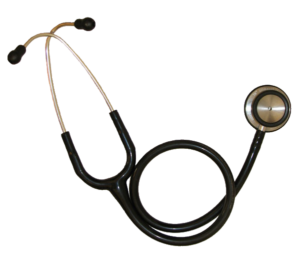 Once again a study finds health benefits from consuming a Mediterranean style diet - a diet rich in fruits , vegetables, whole grains, nuts, seeds, legumes (beans), olive oil, and fish. The US Women's Health Study involved almost 26,000 women who were healthy at the start of the study and were followed for up to 12 years. The researchers found that a higher consumption of a Mediterranean style diet was associated with about a 28% lower risk in cardiovascular disease events (heart attack, stroke, coronary arterial revascularization, cardiovascular death). Based on what they generally ate, they were classified as having a low, middle, or upper intake of a Mediterranean style diet.
Once again a study finds health benefits from consuming a Mediterranean style diet - a diet rich in fruits , vegetables, whole grains, nuts, seeds, legumes (beans), olive oil, and fish. The US Women's Health Study involved almost 26,000 women who were healthy at the start of the study and were followed for up to 12 years. The researchers found that a higher consumption of a Mediterranean style diet was associated with about a 28% lower risk in cardiovascular disease events (heart attack, stroke, coronary arterial revascularization, cardiovascular death). Based on what they generally ate, they were classified as having a low, middle, or upper intake of a Mediterranean style diet.
From Medical Xpress: Researchers explore what's behind Mediterranean diet and lower cardiovascular risk
A new study by investigators from Brigham and Women's Hospital, Harvard Medical School, and the Harvard T.H. Chan School of Public Health offers insights from a cohort study of women in the U.S. who reported consuming a Mediterranean-type diet. Researchers found about a 25 percent reduction in the risk of cardiovascular disease among study participants who consumed a diet rich in plants and olive oil and low in meats and sweets. The team also explored why and how a Mediterranean diet might mitigate risk of heart disease and stroke by examining a panel of 40 biomarkers, representing new and established biological contributors to heart disease.

 Very interesting - that infections may be a trigger for a coronary heart disease event such as heart attack or ischemic stroke, within the next 3 months. [Ischemic strokes are strokes caused by a blood clot.]
Very interesting - that infections may be a trigger for a coronary heart disease event such as heart attack or ischemic stroke, within the next 3 months. [Ischemic strokes are strokes caused by a blood clot.]  Once again, recent studies found that eating real food (fish) is associated with health benefits, but taking a supplement (omega-3) isn't. Similar findings about fish versus omega-3 fatty acid supplements have also been found in other studies. Fish contains omega-3 fatty acids and many other nutrients - more than are found in supplements.
Once again, recent studies found that eating real food (fish) is associated with health benefits, but taking a supplement (omega-3) isn't. Similar findings about fish versus omega-3 fatty acid supplements have also been found in other studies. Fish contains omega-3 fatty acids and many other nutrients - more than are found in supplements. Full fat dairy products better (healthier) than low-fat or non-fat dairy products? A number of studies have recently suggested this (
Full fat dairy products better (healthier) than low-fat or non-fat dairy products? A number of studies have recently suggested this ( Two more studies find that drinking coffee is associated with health benefits, which is good news for coffee drinkers. The first
Two more studies find that drinking coffee is associated with health benefits, which is good news for coffee drinkers. The first  Walk, walk, walk for health - and the faster, the better. The message from a
Walk, walk, walk for health - and the faster, the better. The message from a  Another study has found that the most common vitamin and mineral supplements (multivitamins, vitamin D, calcium, and vitamin C), don't offer hoped for health benefits, and may actually carry some risks. This
Another study has found that the most common vitamin and mineral supplements (multivitamins, vitamin D, calcium, and vitamin C), don't offer hoped for health benefits, and may actually carry some risks. This  New research published in
New research published in